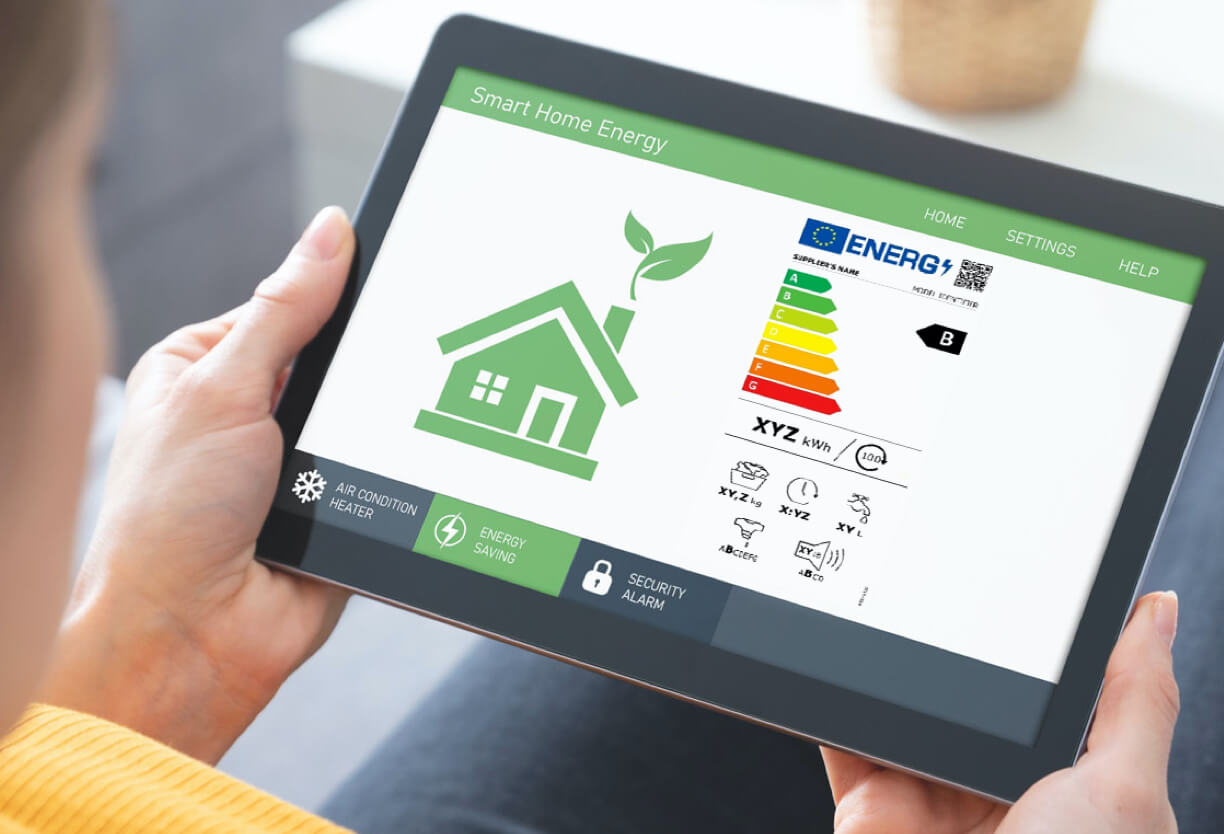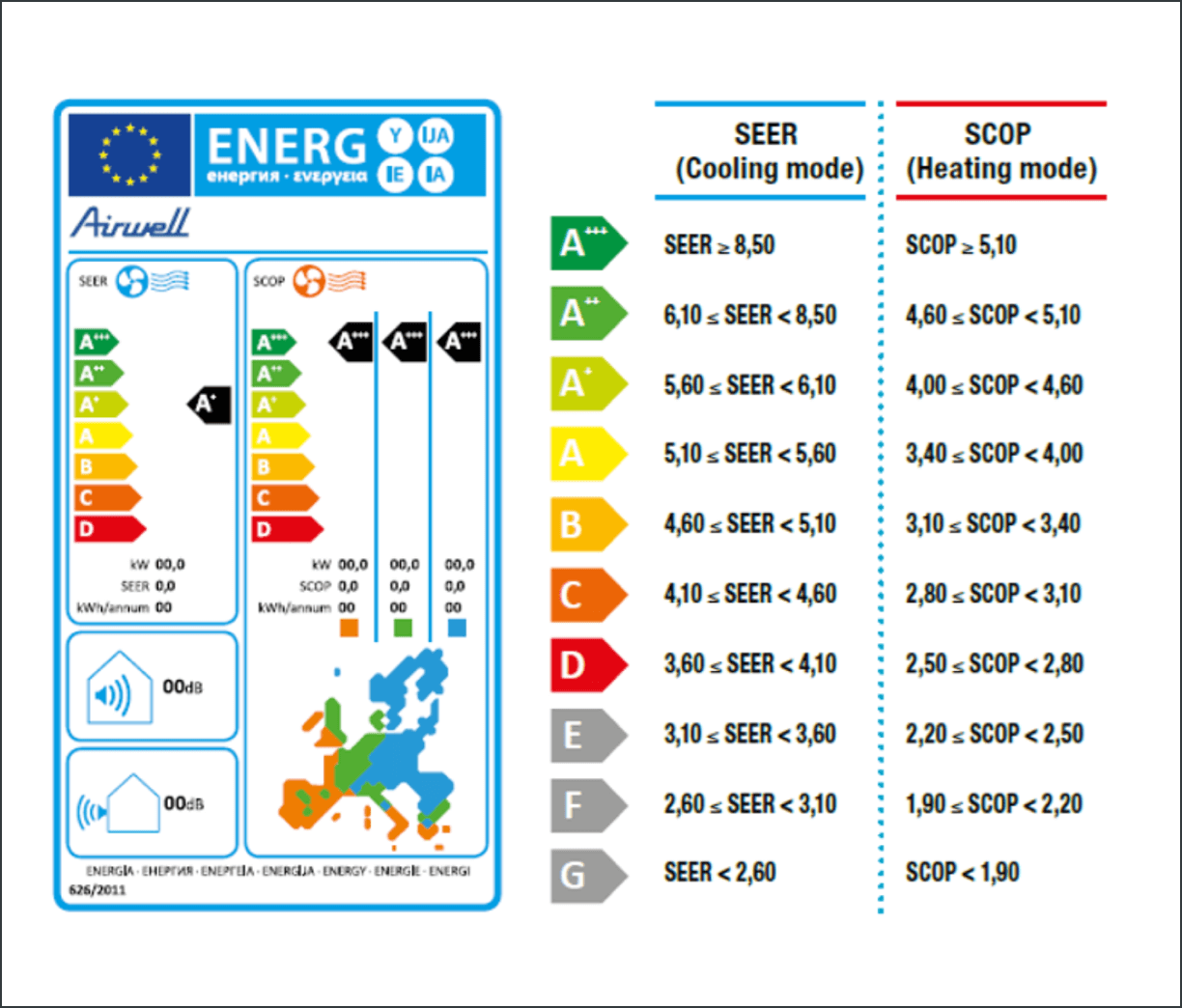
Energy label 2021, more readable for the consumer
Energy labels show the classification of appliances manufactured or sold in the EU according to their energy consumption. They allow you to save money by making an informed choice of products that consume the least amount of energy.
Seasonal efficiency
Seasonal efficiency is a method of measuring the actual energy efficiency of heating and cooling technology over a whole year. This measure gives a more realistic indication of the energy efficiency of a system and its impact on the environment. The energy efficiency assessment methodology is defined according to the EU Energy-Using Products Directive (ErP Directive or Eco-Design Directive) which specifies the minimum eco-design requirements that manufacturers must incorporate into energy-using products.
Seasonal efficiency requires a rating system for heating and cooling products, to be implemented by all manufacturers. This rating system is as follows:
- Seasonal energy efficiency ratio (SEER) for cooling/refreshing
- Seasonal coefficient of performance (SCOP) for heating

How are the SEER and SCOP codes interpreted?
The energy consumption (efficiency) of a heat pump is expressed using the SEER and SCOP coefficients.
- SEER is the Seasonal Energy Efficiency Ratio of the product and defines its cooling mode energy class.
- SCOP is the Seasonal Coefficient of Performance and defines the heating mode energy class of the heat pump. The higher the SCOP and SEER coefficients, the more economical the unit. These codes make the energy performance of different appliances easier to compare.
Seasonal assessments
Seasonal ratings reflect the actual energy consumption of a heat pump, based on its energy efficiency over a whole year. The SEER and SCOP values measure the annual energy consumption and efficiency with typical daily use.
In the long term, they account of temperature fluctuations and standby periods to give a clear and reliable indication of typical energy efficiency over an entire heating or cooling season.
